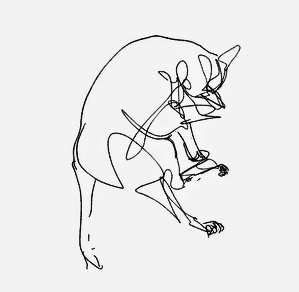
Colophon
All models are wrong, but some are useful
Designers and artists make their portfolios to showcase their work. Pretty obvious. Websites are the digital form of showcasing the work. Also pretty obvious. However, recruiters see the web-portfolio as a process model of a designer. What is a designer’s ethos, what are the layers which she operates in, and what type of work does she likes to produce. While recruiters would like to know the first two things, most portfolio websites are just about the ends and not about the means /0. The idea of means is roughly translated to a designer's process, I mean a much deeper translation of means
It feels that most design portfolios look the same, talk in the same way, try to solve similar problems. They essentially create some kind of noise by closely resembling with each other. Being a designer also means to design your own portfolio, a portfolio that communicates at a different level than the others.
Although design output is usually visceral, experiential, to be able to display and view the ethos of designers, I think design articulation is a must. Development of ethos is a continuous process (which is longer and different) than design process. To represent that, blogs, tweets from designers are important to be able to know a designer completely.
In this representational sense,
All portfolios are rubbish, some are communicative.
Through blogs, tweets, small gimmicky artefacts, and notion links, I aim to make this website a bit more communicative, a bit more transparent, a bit less self-promotional and a bit more representative of me, my own digital garden which you can visit. I would like, if you liked it, but if you have some suggestions, I would love to hear them out.
Go-Hu-go
The website is build using Hugo and Tuftesque. Hugo is a static site generator written in Go. I have used Grav (2017-2019) and WordPress (2013-2017) before switching over to Hugo. Grav being a flat-file CMS, had tremendous build times as I used goDaddy servers to host. The compilation itself took around 30s to 1m. But the major drawbacks were not related to effeciency of compilation, but were functional. One, the pipeline to git was pretty complicated. The plugins were limited in functionality /1 1/ One needed to install plugins to embed YT videos. . The next overhaul of my web presence demanded an easy development and customisation with better loading time than Grav.
The build time of Hugo sites is around 20ms on my 4GB single core development machine running Ubuntu 18.04. Hugo allows me to have an easy offline development experience with more HTML/JS based plugins. Themes available for JAMSTACK are more in number than that of flat-file/CMS/Php based websites. As for hosting, I still have a goDaddy space, but I prefer to use ghpages. I do not mind the ‘github.io’ at least for the less serious and unstructured work. I can always point it to my domain later. Also, I do not use images much, so, gh pages should do the job.
The load time as measured through Pingdom for hugo site using github pages is 455ms from European servers. This is decent as compared to a Grav website on a goDaddy hosting with load time of 10s from European servers. Also, the number of requests is reduced from 56 to a mere 14 at the moment. As for writing experience, I, anyday prefer writing on Sublime text than on the WYSIWYG editors. Additionally, I use Notion these days which can export Pandocs markdown. So, I write whereever I want on Notion, and then, just copy-pasta for the Hugo site.
Tuftesque
I infatuated with side notes and pull-away margin notes while writing my term paper. gwern.net alleviated the infatuation. TufteCSS felt the right answer as the moment. I do not use much images on my pages anyway (except when I want to show prototypes), although it has a pretty good way of lay-ing out images for the web. Thankfully, there were several implementations of Tufte CSS for hugo out there. Notably by ShawnOhare, Alanorth and NStrayer. I used NStrayer one as I found it through a blog and has pretty good explanation apart from documentation.
I intend to use margin notes for better structuring of my thoughts, with more intelligent and network content than a normal medium-like blog. While web is not the print /2, I borrow from Tufte’s tips on qualitative display of information 2/ From the Leipmann's description of the Tufte Project
Content
The logo.png of this website is Ingi, a lazy-yet-cool cat and a friend of a friend-Paulanthony [their twitter, instagram]. Thanks to Paul for allowing me to use his supercool sketch of Ingi for this website.
 Ingi /iŋdʒi/
the great
Sketch by Paul
Ingi /iŋdʒi/
the great
Sketch by Paul
And the bird-app cliche: Opinions and ideas are my own. Projects are definitely my own.